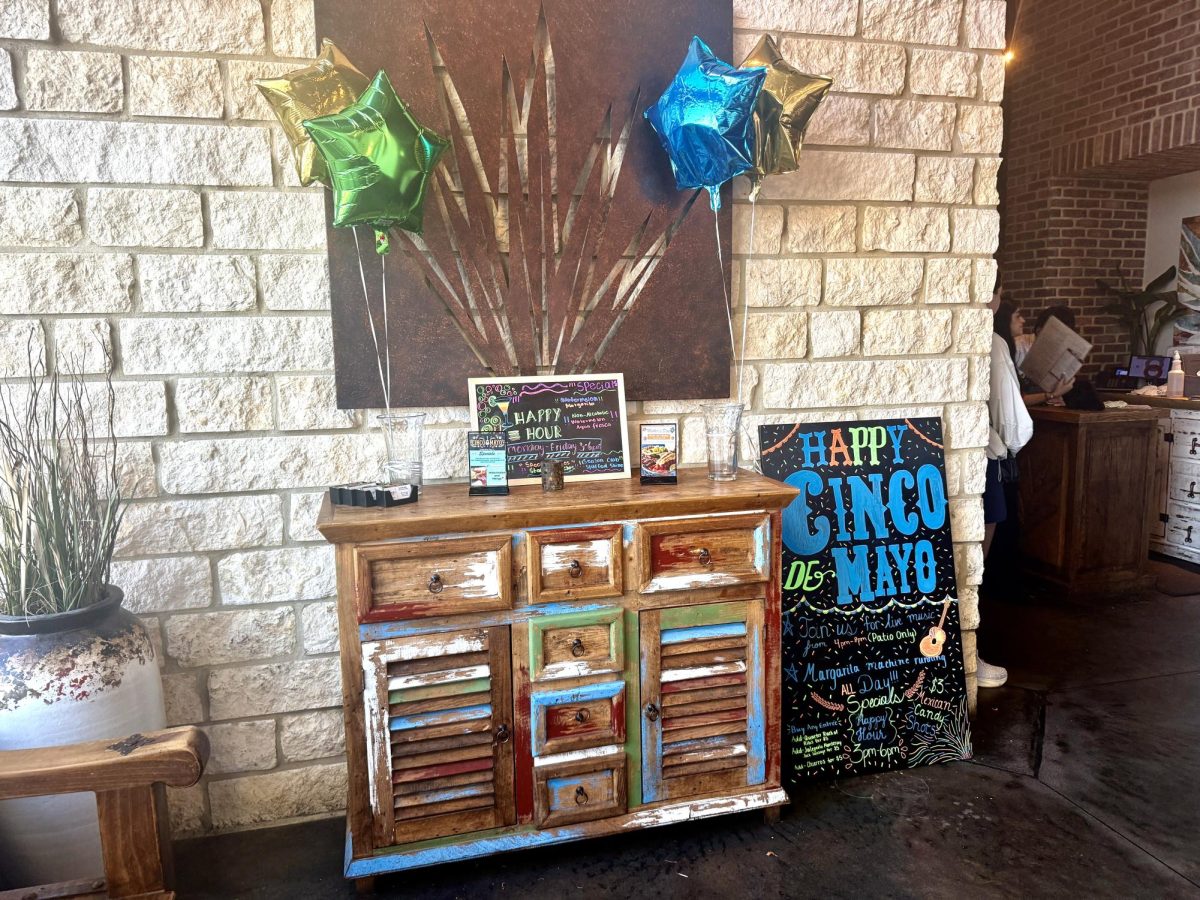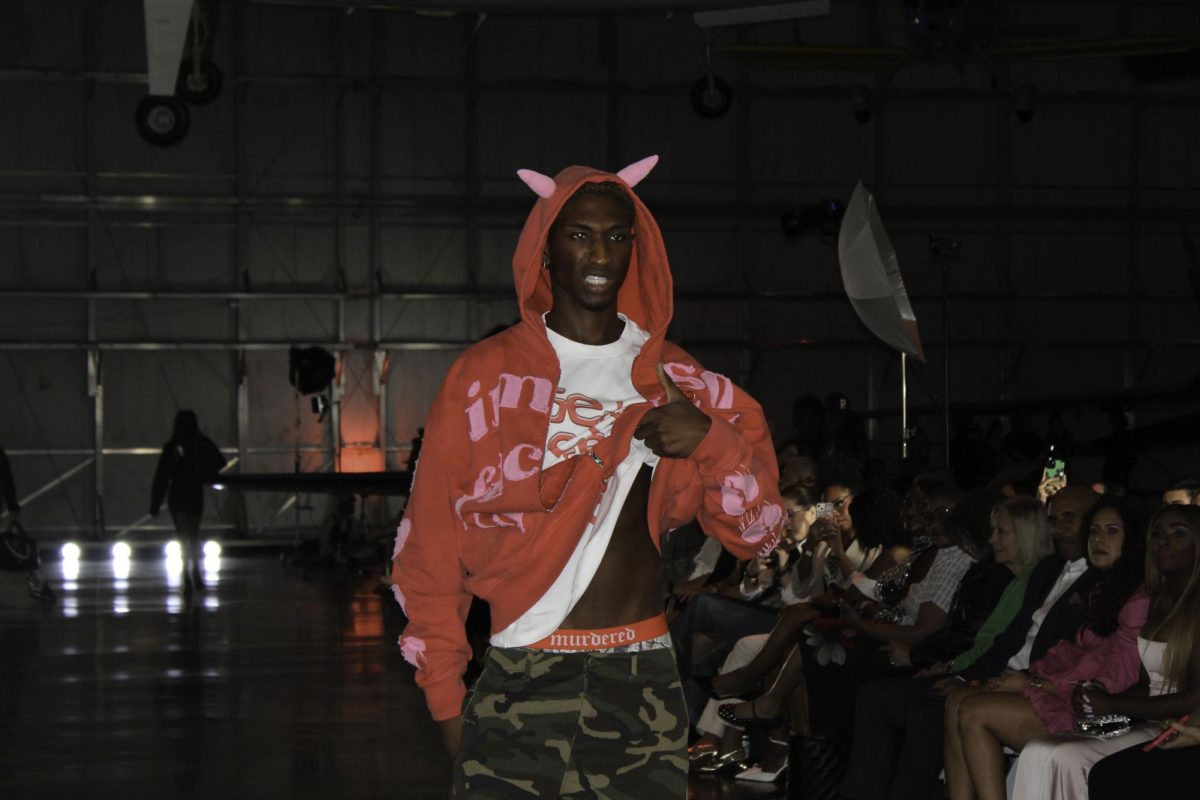Last fall, Lucia Simek replaced her 2013 Ford Escape with a 2017 Volvo XC60. But when the new-to-her car arrived from Carvana in September, it had a slight problem. There was no gas cap, or as Volvo calls it a fuel door.
Carvana told her they could replace the car, but they would need to keep it for a week during repairs.
“I didn’t have another car to drive for seven days, so I just never got it fixed,” the deputy director at the Dallas Contemporary said. “I drove around with it like this for six months, and then I was staring at it one Saturday and I thought, ‘Why don’t we just get an artist to do something on the fuel door?’ And then we just started talking and spitballing ideas, and I came up with this idea where we would commission artists.”
Simek and her husband, a Scottish curator and writer named Gavin Morrison, decided to turn their car into a “roving gallery,” in Simek’s words, called The Fuel Commission. The couple buys a new fuel door from Volvo and then gives it to an artist. A week later, the refurbished fuel door is installed onto a Volvo XC. The price is determined by the cost of the Volvo’s most recent tank of gas times 10. The artist gets all the money, minus the cost of a new fuel door.
This art project is breaking the boundaries of contemporary art, and is engaging unexpected art with real life. Artists have called Simek’s practice deeply intelligent and beautiful, and her ideas surprise and challenge artistic audiences. Observers say that Simek’s caliber of artistry, authorship and curator skills make Simek an inspiration.
The first Fuel Commission artist was Dallas-based painter Brandon Thompson, known for his cartoonesque style. Thompson’s piece, Broken Dreams sold for $470. He painted a cartoon-style vehicle with blue and gold hues approaching a pothole on a fuel cap.
“A story of having something you worked hard for, but having it lost away due to a mishap,” Thompson said. “Lucia is a friend and someone that I respect in the art community. We share creative ideas every so often whenever I see her at an event or show.”
Keer Tanchak, a “great painter,” Simek said, also based in Dallas, followed. But The Fuel Commission features more than local artists.
“Between my husband and I, we have a lot of international art friends,” Simek said. “So it will kind of run the gamut.”
Tanchak, who is represented by 12.26 Art Gallery in Dallas, makes representational paintings sourced from art history, cinema and popular culture.
“Anything that Lucia is involved in is always a good idea,” Tanchak said. “My curiosity piqued with The Fuel Commission’s pragmatic concept of valuing the artwork by current gas pricing. Plus, I can’t help but to want to put something punchy and beautiful out in the world, especially with the potential for a wide-ranging audience.”
Tanchak is interested in the full spectrum of scale when she approaches painting. She has a lot of experience painting on small surfaces and creating larger installations of paintings that can feel all-encompassing. Tanchak often cuts her paintings “on aluminum into shapes,” so she usually considers the potential of how an image is read in non-rectangular formats.
“The circular fuel cap therefore felt natural to me,” Tanchak said.
Even with an expanded roster of artists, the pricing structure of these unique pieces will remain the same. Simek said she likes that sales figures are based on gas prices, not the art market.
Famous painters can participate in The Fuel Commission, but their work might cost less than a lesser-known artist, simply because gas prices went down that week.
To stay up-to-date on the latest fuel cap art, it’s worth following The Fuel Commission’s Instagram page (@the_fuel_commision). Simek is unsure how long she and Morrison will keep this unique project going.
“Maybe a year, maybe less, maybe more,” Simek said. The artistic duo hasn’t thought that far ahead, and overthinking would take the fun out of such a spontaneous, creative idea .
“It’s just a way of engaging artists,” Simek said, “For them to do something sort of goofy.”
So, it turns out that receiving a damaged car from Carvana might spark the most creative idea of your life.
A shorter version of this story is scheduled to run in the June edition of D Magazine.









